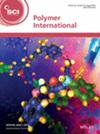下载PDF
{"title":"3D printing of lignin-based polymeric composites obtained using liquid crystal display as a vat photopolymerization technique","authors":"Giovanna Colucci, Francesca Sacchi, Federica Bondioli, Massimo Messori","doi":"10.1002/pi.6783","DOIUrl":null,"url":null,"abstract":"<p>The present work aims to improve the sustainability of polymers and may pave the way for the development through 3D technologies of innovative composites useful for many industries. It highlights the preparation of lignin-based composites by adding lignin to an acrylate epoxidized soybean oil (AESO) resin using a liquid crystal display (LCD) 3D printer. The formulations were obtained by adding tetrahydrofurfuryl acrylate (THFA) as reactive diluent to the AESO matrix as the starting reference system. Then, lignin-based composites were obtained by dispersing lignin at different concentrations within the AESO-THFA resin. The viscosity and printability of the photocurable formulations were first studied because they play a key role in a vat photopolymerization process. Several 3D printed parts were successfully realized via LCD exhibiting high resolution and accuracy and well-detailed geometries. SEM analyses revealed that lignin particles were homogeneously dispersed within the crosslinked AESO-based network. The thermal and mechanical properties of the photocured lignin-based composites were tested by TGA, dynamic mechanical thermal analysis and tensile tests, underlining that the presence of lignin led to a decrease of the elastic modulus and tensile strength, and a slight increase of the glass transition temperature, leaving the thermal stability unchanged. The incorporation of lignin into an AESO polymer network can significantly improve the sustainability of polymers designing and printing innovative lignin-based composites useful for many industrial fields. © 2025 The Author(s). <i>Polymer International</i> published by John Wiley & Sons Ltd on behalf of Society of Chemical Industry.</p>","PeriodicalId":20404,"journal":{"name":"Polymer International","volume":"74 9","pages":"828-838"},"PeriodicalIF":3.6000,"publicationDate":"2025-05-28","publicationTypes":"Journal Article","fieldsOfStudy":null,"isOpenAccess":false,"openAccessPdf":"https://scijournals.onlinelibrary.wiley.com/doi/epdf/10.1002/pi.6783","citationCount":"0","resultStr":null,"platform":"Semanticscholar","paperid":null,"PeriodicalName":"Polymer International","FirstCategoryId":"92","ListUrlMain":"https://scijournals.onlinelibrary.wiley.com/doi/10.1002/pi.6783","RegionNum":4,"RegionCategory":"化学","ArticlePicture":[],"TitleCN":null,"AbstractTextCN":null,"PMCID":null,"EPubDate":"","PubModel":"","JCR":"Q2","JCRName":"POLYMER SCIENCE","Score":null,"Total":0}
引用次数: 0
引用
批量引用
Abstract
The present work aims to improve the sustainability of polymers and may pave the way for the development through 3D technologies of innovative composites useful for many industries. It highlights the preparation of lignin-based composites by adding lignin to an acrylate epoxidized soybean oil (AESO) resin using a liquid crystal display (LCD) 3D printer. The formulations were obtained by adding tetrahydrofurfuryl acrylate (THFA) as reactive diluent to the AESO matrix as the starting reference system. Then, lignin-based composites were obtained by dispersing lignin at different concentrations within the AESO-THFA resin. The viscosity and printability of the photocurable formulations were first studied because they play a key role in a vat photopolymerization process. Several 3D printed parts were successfully realized via LCD exhibiting high resolution and accuracy and well-detailed geometries. SEM analyses revealed that lignin particles were homogeneously dispersed within the crosslinked AESO-based network. The thermal and mechanical properties of the photocured lignin-based composites were tested by TGA, dynamic mechanical thermal analysis and tensile tests, underlining that the presence of lignin led to a decrease of the elastic modulus and tensile strength, and a slight increase of the glass transition temperature, leaving the thermal stability unchanged. The incorporation of lignin into an AESO polymer network can significantly improve the sustainability of polymers designing and printing innovative lignin-based composites useful for many industrial fields. © 2025 The Author(s). Polymer International published by John Wiley & Sons Ltd on behalf of Society of Chemical Industry.
利用液晶显示器作为还原光聚合技术获得木质素基聚合物复合材料的3D打印
目前的工作旨在提高聚合物的可持续性,并可能为通过3D技术开发对许多行业有用的创新复合材料铺平道路。重点介绍了利用液晶显示器(LCD) 3D打印机将木质素添加到丙烯酸酯环氧化大豆油(AESO)树脂中制备木质素基复合材料。以丙烯酸四氢呋喃酯(THFA)作为反应稀释剂加入AESO基质作为起始参比体系,得到了该配方。然后,将不同浓度的木质素分散在AESO-THFA树脂中,得到木质素基复合材料。首先研究了光固化配方的粘度和印刷适性,因为它们在还原光聚合过程中起着关键作用。通过LCD成功实现了几个3D打印部件,具有高分辨率和精度以及详细的几何形状。扫描电镜分析表明,木质素颗粒均匀分散在交联的aeso网络中。通过热重分析(TGA)、动态力学热分析(dynamic mechanical thermal analysis)和拉伸测试对光固化木质素基复合材料的热力学性能进行了测试,结果表明木质素的存在导致复合材料的弹性模量和拉伸强度降低,玻璃化转变温度略有升高,热稳定性保持不变。在AESO聚合物网络中加入木质素可以显著提高聚合物的可持续性,设计和打印创新的木质素基复合材料,在许多工业领域都很有用。©2025作者。聚合物国际出版的约翰威利&;我代表化学工业协会的儿子有限公司。
本文章由计算机程序翻译,如有差异,请以英文原文为准。




 求助内容:
求助内容: 应助结果提醒方式:
应助结果提醒方式:


